The glamourous city Shillong, capital of Meghalaya today, was completely in wilderness till 1866. There was no proper residential area even, other than some temporary huts made of stones and branches of trees in the present upper Laban area. Some plain paddy fields were there in the present upper Laban and Pynthorumkhrah area, where the Khasi people from nearby villages would plant paddy during summer time.
Due to excessive cold and dense forestry people did not find comfortable and safe to stay in the hill.
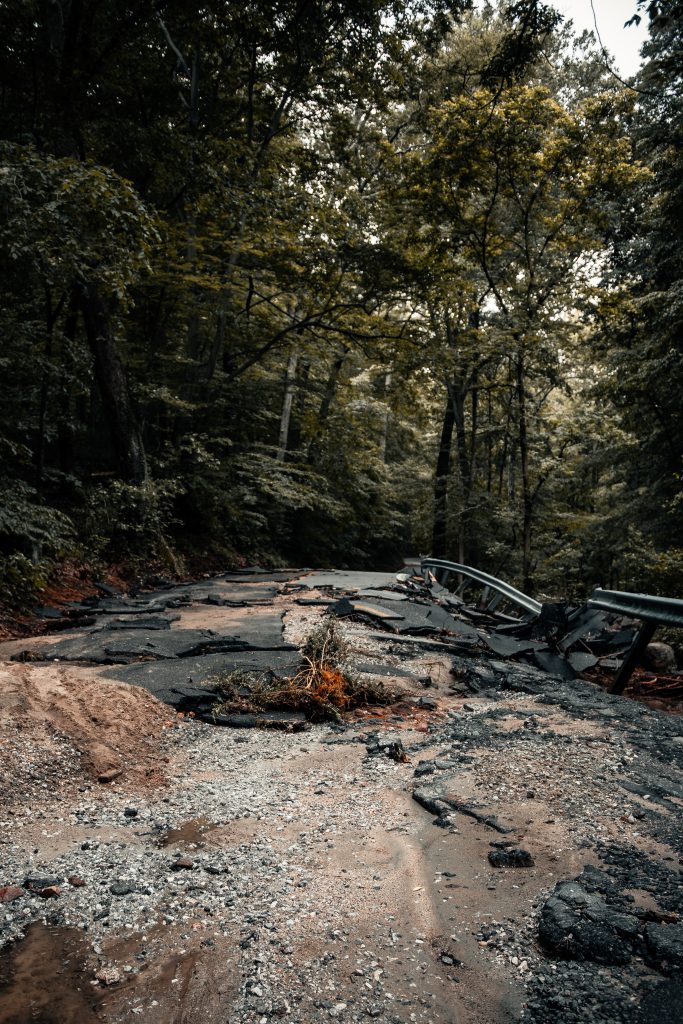
The story of Shillong actually started at Cherrapunji, the first Headquarters of the Khasi and Jaintia Hills District under the Assam Division of the province of Bengal.
But the British Officers found Cherrapunji quite damp and unhealthy due to heavy rainfall; and a good number of the officers died of enteric fever, including David Scott, the founder of British suzerainity in the hills. The remaning officers started hue and cry for their safety to shift the head quarter from Cherrapunji to a healthier place.
Meanwhile, as early as 14th October, 1856, J . Allen, Member of the Board of Revenue of the Bengal government, apparently responding to the grievances of the officers, recommended shifting of the district headquarters from Cherrapunji to a more suitable place. The area, known today as Upper Shillong, lying at the foot of the Shillong Peak, was selected as the site of the next district headquarters and sanatorium, but the site had to be abandoned mainly because there was no source of adequate water supply for the people of the projected town. The choice ultimately fell on Iewduh, (Present Barabazar area) as the area was known then.
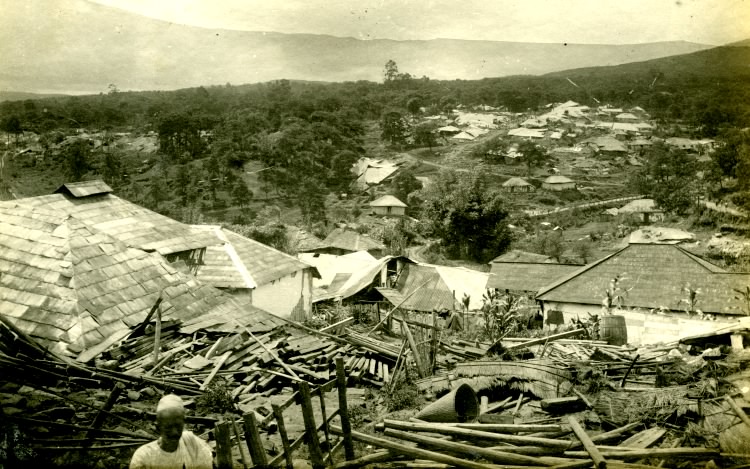
Col. Henry Hopkinson, then commissioner of Assam Division and Agent to the Governor General, who actually fathered the town of Shillong, took up measures for building up the town and shifting the district headquarters from Cherrapunji. In 1861, he directed Capt. Rowlat, the Deputy Commissioner of the district to proceed to Iewduh accordingly.
Capt. Rowlat built a cottage for his stay at Iewduh, and made a detailed survey of the area for the projected town. Col. Hopkinson also sanctioned Rs. 35,000 for the improvement of the Guwahati – Iewduh cart road. The final selection of Iewduh as the site for the new town was communicated by a letter dated December 18, 1863, to the Bengal Government, which in its turn, approved purchase of land for the purpose. Col. Hopkinson purchased 2499 acres of land at a cost of Rs. 8,433, including Rs. 1,000 paid to the Syiem of Mylliem for renouncing all claims to the purchased land. This was the area on which Government buildings began to be constructed. Col. Hopkinson named the town ‘Shillong’.
[Ref:- ‘Birth of Shillong’ by Prof. Dr. B. Dutta Roy. The Assam Tribune 7th October 1976.]
It was only on April 28, 1866, that the Deputy Commissioner’s office, Treasury, Jail and Police started functioning at Shillong, the new born town.
No other State capital in the country has undergone such changes of status and fortune as Shillong since its foundation.
In February 1874, on the formation of Assam as a separate province, Shillong was chosen as capital of the new province on account of its salubrious climate and conveniently central situation between the Brahmaputra Valley and the Surma valley. The site of the present Raj Bhavan was then purchased from Mr. Bivar, former D.C. of the district who owned this property, at a cost of Rs. 26,000 for the construction of the official residence of the Chief Commissioner of the province. The road below the present Raj Bhavan along the lake still bears the name of Mr. Bivar. [Bivar Road]
A big catastrophe came down upon the new city Shillong on 12th June 1897, to crush the beautiful resort to dust, swept away many valuable lives and properties to turn the place into debrises. It was a horrifying and tragic episode of 19th century Shillong.
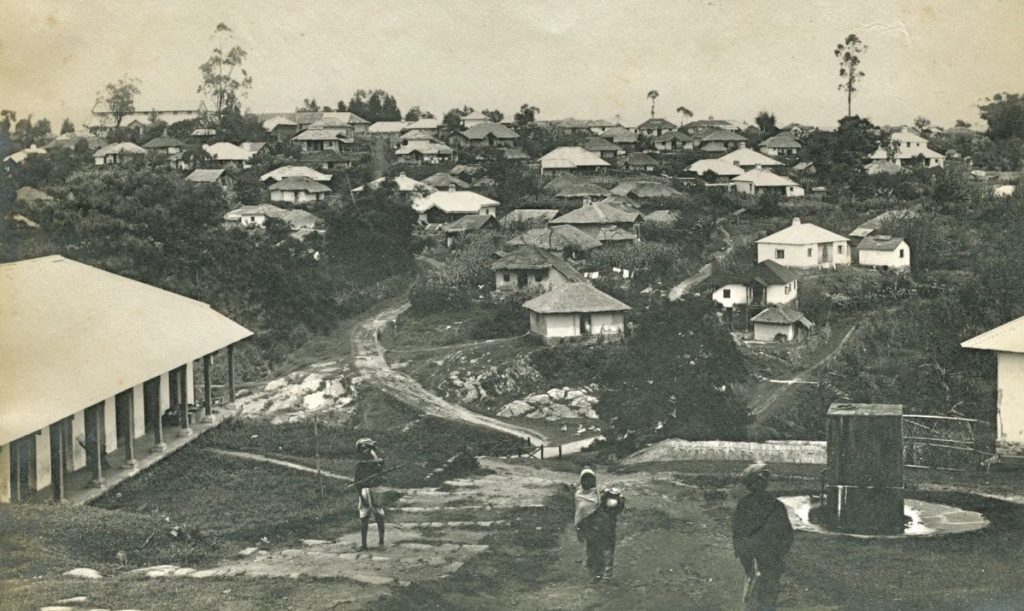
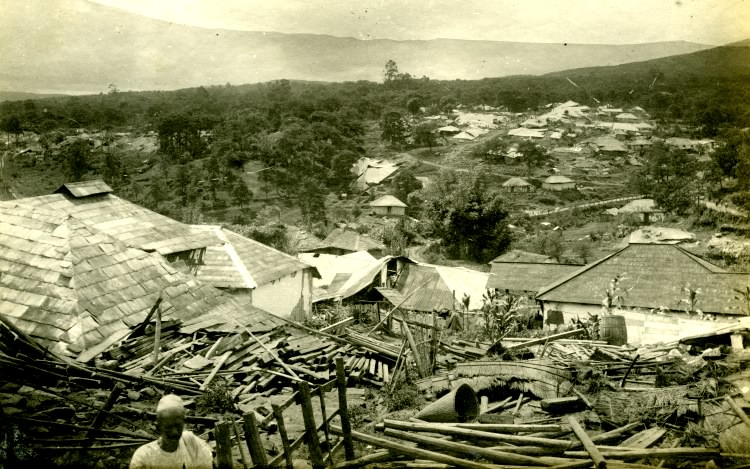
1897 Aftermath
Let us hear the eeric discription from an eye-witness (L) Sarada Manjuri Dutta, as described in her published work, (Maha Jatrar Pothey):-
‘12th June 1897, was an inauspicious and doomy Saturday. It was evening, being a Half holiday in the offices and schools, people were relaxing at home, and it was a bolt from the blue! All on a sudden a very strong tremor jerked the whole region, with a horrible underground sound and it was continuing! Houses were collapsing with residents inside! People lost their control in movement for the constant tremoring and big fissures on ground. Only helpless shouting and cry of the children and women grasped the whole environment! The first tremour continued for three minutes and then with intervals continuing for long three days, levelling the hill city to the ground. It was a tremendously dreadful condition, recorded in the century old history of Shillong. The then newly built hill city turned into debrises within a few seconds. A big catestrophy! Many children were buried alive due to the big fissures in the floors, but could not be rescued as there was no way out! The helpless mothers would hear their faint piteous cry from underground but could not help! An unbearable heart breaking condition! A big tradegy’!
The earthquake of June 12, 1897, reduced them in a heap of ruins in the space of few seconds, wrecked the water supply and destroyed the stone masonry embankment that dammed up the water of the artificial Ward’s Lake built by the Chief Commissioner Sir William Ward in 1893-94 below the Government house. The pent up water of the lake rushing through the breached embankment down the nullah towards the Polo Ground washed away a wooden bridge over it, creating scarcity of drinking water in the whole town.
There were 29 deaths in Shillong, 10 of which occurred in the Secretariat press. Two Europeans killed were Mr. Mc. Cabe, the Inspector General of Police, and Mr. Rossen Rode, a pensioner of the Survey Department. Mr. Mc. Cabe was sick in bed and was found crushed after an hour’s digging of his collapsed bungalow. The total number of lives lost in the Khasi Hills District was 916, maximum of which died due to the falling of hill, which buried them.
The Govt. report goes as:-
The Assam earthquake of 1897 occurred on 12 June 1897, Saturday in Assam, British India at UTC, and had an estimated moment magnitude of it resulted in approximate 1,542 human casualties and caused catastrophic damage to infrastructures.
In Shillong, the earthquake took place at about 5:11pm June 12th. The shock was preceded by a rumbling underground noise which lasted for about 3 minutes. The actual earthquake lasted about two and a half minutes in Shillong. This noise was compared with the tremendous rumbling noise like a thousand ships’ engines thumping away in the midst of a storm at sea. The shocks were so severe and prolonged that everything was leveled to the ground. Mr. F. Smith of Geological Survey of India who was stationed in Shillong at the time, opined that the earthquake was so violent that the whole of the damage was done in the first 10 or 15 seconds of the shock. He reported that all stone buildings collapsed, and about half ikrabuilt houses were ruined, but plank houses (wooden frames covered with plank walls, resting unattached on the ground) were untouched. Many people lost their lives at the Secretariat, the military lines and the bazaar’. The London Times reported the death of 27 people in Shillong, 13 of them crushed to death in the Government Press. However, a year later, Luttman-Johnson reported the loss of ten lives at the Printing Press. The London Times also mentioned an unnamed district town of 750 perishing. This town probably was Cherrapunji where a landslide wrecked the Cherrapunji Railway and caused 600 deaths.
On August 10, 1897, the Times published letters from residents of Shillong. Rev. G.M. Davis was quoted saying that his church became a heap of stones in less than one minute. The water burst the bounds of the lakes making them absolutely dry within seconds. There was sulphury smell in the air coming out of fissures in the ground. He saw huge stones in the steps of his house literally bubbling up and down. Mr. M’ Cabe, the Inspector-General of Police, who was sick and in bed was found crushed on his bed after an hour’s digging of his collapsed bungalow. [Ref:- 1897 Assam earthquake From Wikipedia]
(L) Sushila Dutta, mother of Prof. Suprava Dutta Lady Keane College Shillong in her old age expressed her terrible experience of that furious moments of earthquake which she personally witnessed and miraculously survived, as:-
‘It was 12th June 1897, Saturday 5pm. All schools and officess had half holiday; and so, my husband was at home I had high fever and Doctor Kamala Charan Dutta was called at home who examined me and prescribed medicine. Prasanna Babu, a very close friend of my husband was also present there. My little girl of one year was playing on the floor in my bedroom. Suddenly a violent tremour! A stupendous jerk with a tremendous rumbling sound! Our house was moving and collapsing! I was so panicked to get my little daughter to me but within winkling of an eye, the house collapsed and I discovered myself thrown outside in the compound, and Dr. Kamal Babu grasping my little daughter was helplessly crying for rescue from half underground. It was an unbearable scene! The tremour was continuing with full intensity I was crying to rescue my child. My husband and our servants, with spade and axe cleared the debris and rescued them very tactfully from a very critical condition. We had to take shelter in the Jailroad field. The tremour continued for almost three days with intervals. Many mothers lost their children underground, heard their cry but despite all attempts failed to rescue! That tremounds destructive incident of that deadly earthquake left an indelible mark in my memory’! [Translated from ‘Shillong er smriti’ By Sushila Sundari Dutta. Ref. ‘Netaji Pathagar Golden Jubilee Souvenir’]
There were also several reports from Shillong in Luttman-Johnson’s paper, where it was reported that that there were aftershocks almost every ten minutes on the night of the 12th and during the day of the 13th.
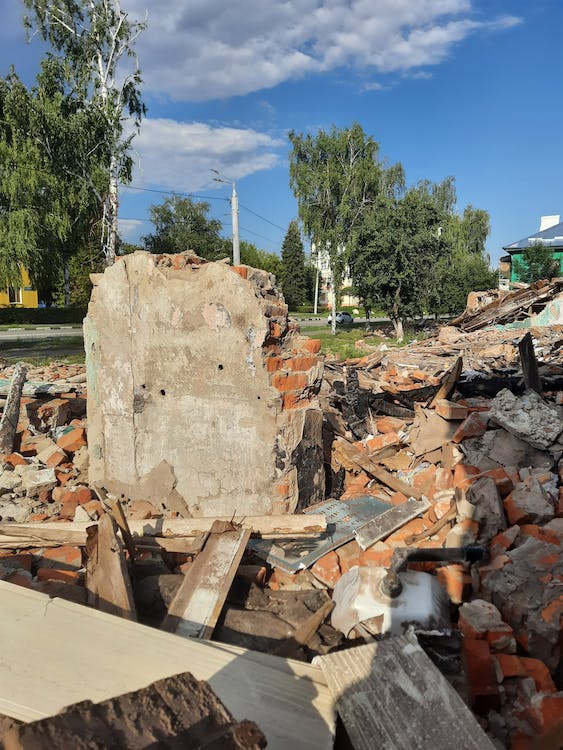
Today it is a history, a mere episode only but that disastrous earthquake of Shillong moved the whole world; and many global seismologists visited then Shillong to research on the subject. They observed that the light constructions of wood and clay etc remained unhurt despite the strongest jerks of the earthquake whereas the RCC buildings were crushed to dust.
Prof. Asuri, an expert from Japan, detected that being a bumpy hilly place with rocky soil, Shillong was not fit for heavy concrete buildings, but light buildings with wooden frame and Ickra walls etc could be sustaniable here.
Accordingly the city was rebuilt with light constructions of buildings and houses which were named as ‘Assam type buildings’.
So, since 1897, the Assam type constructions started in Shillong very popularly.
In this big span of hundred and twentyfive years, of the catastrophe Shillong faced many ups and downs, many political changes and natural calamities at the same time; but braving all evils Shillong is still shining!
Uma Purkayastha, a well-known author, is a retired principal of the Govt. Girls’ Higher Secondary School in Shillong and an academic by training. She started writing at an early age and has written a significant number of poems, short tales, novels, and plays. She is an ardent reader with keen insights. Some of her significant books are “Tagore and Pineland Shillong,” “Uttaran,” “Golpo Sambhar,” and “Beacon Light of the Khasi Hills.”
